Economic Development COMPREHENSIVE STRATEGY

2023 - 2028
SOUTHEASTERN MASSACHUSETTS



2023 - 2028

This CEDS would not have been possible without the support, input, and local knowledge provided by the regional stakeholders, professional staff, and leadership of the Regional Economic Strategy Committee (RESC).
The Southeastern Regional Planning and Economic District (SRPEDD) presented the Draft CEDS on February 1, 2023 at the Winter RESC Meeting. Members of the RESC were encouraged to review and provide comments through May 8, 2023, upon which members voted to approve the 2023-2028 CEDS.
SRPEDD would like to acknowledge the following:
Dick Schafer, Chair
Alan Slavin, Vice Chair
Ken Buckland, Town of Wareham
Mayor Paul Coogan, City of Fall River
Paul DiGiuseppe, Town of Middleborough
Catherine Feerick, City of Attleboro
Chris McDermott, Town of Mansfield
Jennifer Menard, Bristol Community College
Mayor Jon Mitchell, City of New Bedford
Susan Murray, SEED
Mayor Shaunna O’Connel, City of Taunton
Christine O’Grady, Town of Dartmouth
Jay Pateakos, MassDevelopment SE
Lyle Pirnie, Town of North Attleboro
Derek Santos, NBEDC
Kris Silva, Taunton Area Chamber of Commerce
Christopher Yarworth, Town of Plainville
SRPEDD
Robert Cabral
Lizeth Gonzalez
Kevin Ham
Phillip Hu
Grant King

The Southeastern Regional Planning and Economic Development District (SRPEDD) is proud of our long partnership with the U.S. Economic Development Administration (U.S. EDA). Working with the communities, businesses, and people of Southeastern Massachusetts, U.S. EDA and SRPEDD have a successful track record:
• In our role as the region’s federally designated Economic Development District (the “EDD” in SRPEDD), we collaborate with U.S. EDA to bring millions of dollars of public and private investments into the region each year.
• In partnership with local jurisdictions, businesses, and academic communities, we advance a wide variety of economic development activities, projects, and plans.
• We act as co-sponsors and grantwriters for numerous federal and state applications; in this way, we pursue coordinated investments and meaningful incentives to ensure that economic development takes place where and how communities want it.
• We host and staff an increasingly active and diverse Regional Economic Strategy Committee (RESC).
• And, finally, we develop and maintain the region’s Comprehensive Economic Development Strategy (CEDS).
This 2023 CEDS presents the region’s current economic development goals, our latest target redevelopment sites, and commonsense permitting and financing strategies. It also serves as a guidebook, a vision statement, and an inventory of opportunities. And – because SRPEDD understands that the business and development communities look to the public sector to be a reliable partner – it sets clear goals, relies on good data, and creates reasonable expectations – all in an effort to provide sufficient, necessary, but not excessive planning.
With our long history and straightforward approach in mind, SRPEDD has created the 2023 CEDS to meet all U.S. EDA standards while also being concise, graphically designed, and actionable. SRPEDD will also respond to new U.S. EDA recommendations that CEDS documents should be flexible and responsive to changing economic conditions by making room for annual updates, tracking performance measures, and creating direct links to our new EDD web page. Finally, as always, this new CEDS will build on the strong foundation of our region’s longstanding relationship with U.S. EDA to advance national, state, and local economic development priorities.

We are made up of diverse communities.
Four Historic Cities
New Bedford, Fall River, Taunton, Attleboro
Mid-sized Towns with well-defined downtowns and villages, such as Mansfield, Middleborough, Wareham
We are well-connected.
Coastal Towns such as Mattapoisett, Swansea, and Dartmouth
Small or Rural Towns such as Carver and Dighton
We are strategically located near Boston, Providence, and Cape Cod. We have strong infrastructure, such as our ports and roadways.
We host healthy, active, and engaged regional institutions.
We have incredible natural resources.
Our natural resources include hundreds of miles of coastline, the state’s largest natural lakes, thousands of acres of wetlands, habits, and forests, and numerous rivers, including the federally designated Wild and Scenic Taunton River running through our region’s heart.
We are growing and dynamic.
Our population is growing, diversifying, and pursuing more education. Our communities are well established and resilient.
In short, Southeastern Massachusetts provides diverse opportunities and a high quality of life. We will explore these strengths – and our region’s weaknesses and threats – in the SWOT analysis section of this document.

Thanks to U.S. EDA-funded investments totaling over $2 million, a former coal-fired power plant in Somerset, Brayton Point, now represents an opportunity for meaningful brownfield remediation and redevelopment. This transition is already underway with the acquisition of 47 acres by Prysmian Group, an international firm that specializes in the production of electrical cable for the energy sector. Prysmian plans to construct a manufacturing facility at Brayton Point to produce underwater transmission cables. This project would bring high-wage, quality jobs to Somerset and bolster the region’s role in supporting the Marine Science and Technology (MST) industries.
The nation’s #1 commercial fishing port, New Bedford Harbor is home to 350 commercial fishing vessels with another 150 calling on the port throughout the year. In 2021, U.S. EDA Awarded the New Bedford Port Authority with $16 million in funds to complete Phase II of the North Terminal expansion, as well as Pier and Fendering repairs. Completion of this project – with a total cost of $20 million –will enable the development of new waterfront industries and expansion for additional dockage, bulkheads, offloading and seafood processing, and other activities – all of which create new employment opportunities that will make the harbor’s infrastructure and economy more resilient.

We’ve worked hard to bring change to the region since the last CEDS.
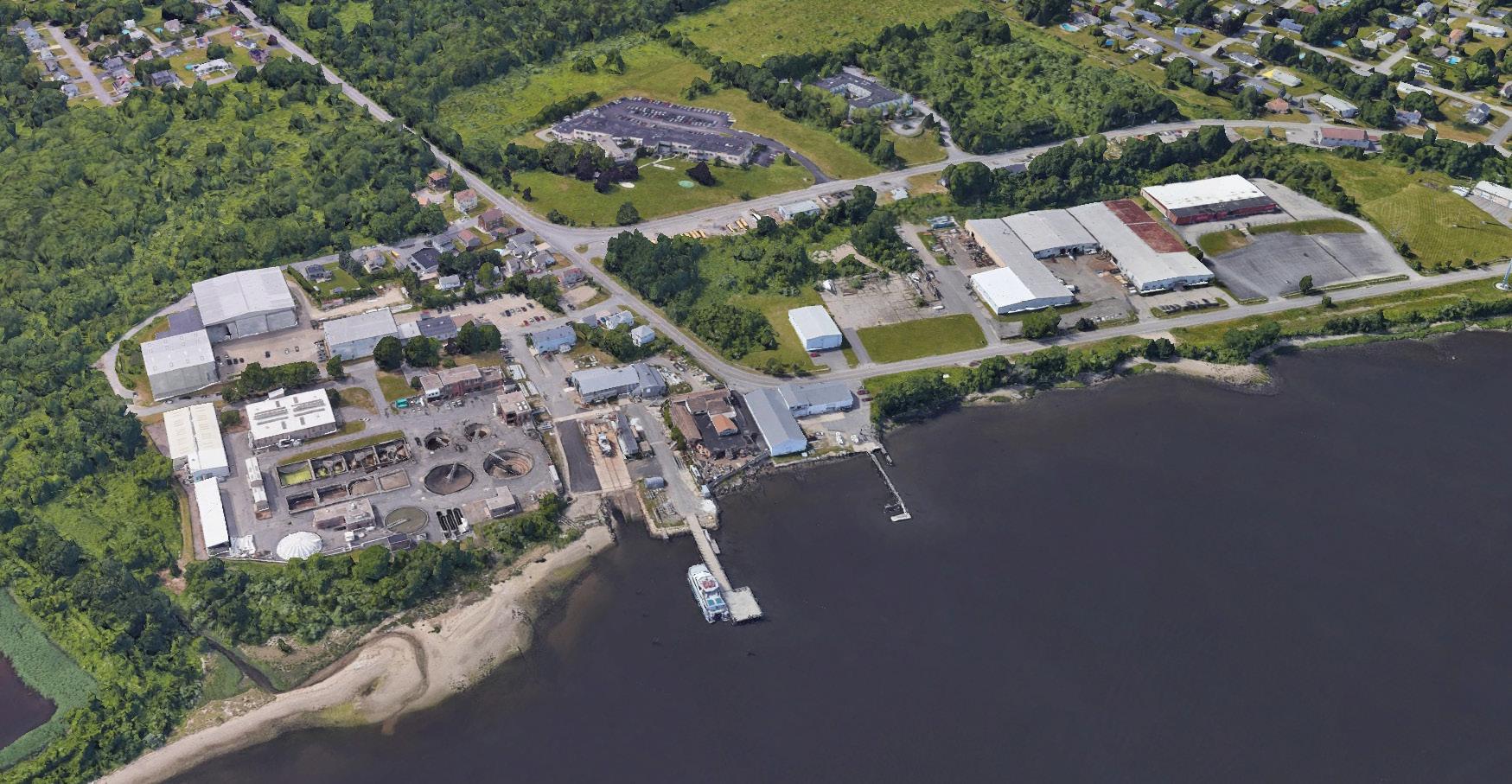
In 2021, EDA awarded $1.4 million to fund improvements along Industrial Drive and North Street located at the I-195 Interchange in Mattapoisett. Investments included intersection improvements (at Industrial Drive and North Street) and drainage improvements. Industrial Drive is the main access roadway serving Mattapoisett’s 100-acre industrial park. Now completed, the improvements will directly support new development and expansion opportunities within the park. These opportunities include attracting an estimated $35-$45 million in private investment; enabling development of 350,000425,000 s.f. of new and expansion space for light manufacturing, assembly, warehouse, distribution, and office uses; and the creation of roughly 350 new jobs and $600,000 in new tax revenues.
In 2021, U.S. EDA awarded Somerset $1.3 million to pursue improvements and limited engineering services to address a widespread “infiltration and inflow (I&I)” problem in Somerset’s municipal water distribution and sewer collection systems. Completion of this project, scheduled for early 2023, will allow Somerset to capture more capacity in the system and meet future business and industry demands – particularly at Brayton Point and west along the Route 6 Corridor into Swansea. This project also resulted in the creation of a Wastewater District and Intermunicipal Agreement (IMA) between Somerset and Swansea for future sewer service.
For more information, please see the U.S. EDA website: www.eda.gov/archives/2022/grants/2017/


Fall River is currently in Phase I of the $1.3 million Mothers Brook and Industrial Way sewer upgrades; this work is funded through an EDA grant awarded in 2021. Phase I of the project will enable the design and permitting of approximately 27,600 linear feet of sewer lines at Mothers Brook and Industrial Way. Located along a cluster of three (3) industrial parks (including Fall River Industrial Park, Fall River Commerce Park, and South Coast Life Science and Technology Park, Phase I will set the stage to pursue upgrades and improvements that will help expand development and employment opportunities from this regional employment center.
One of the largest and most successful business parks in New England, Myles Standish is a vital economic engine for the region. While it largely built-out – with nearly 6 million s.f. of development and over 7,000 jobs – Myles Standish still presents infill and expansion opportunities.


SRPEDD launched the SRPEDD Regional Resiliency Plan, or SRRP, in late 2021 with funding from three sources: a Commonwealth of Massachusetts Community Compact Cabinet Regionalization and Efficiency Grant, the District Local Technical Assistance (DLTA) program, and EDA funding support. This nearly $250,000 project will develop a comprehensive regional resilience plan focused on Economic, Environmental, and Social themes. Continued growth and prosperity in the district hinges on our region’s ability to prevent, withstand, and recover from disruptions to its economic system. The SRRP will ensure that we are resilient to the greatest extent possible. For detailed information, please see Section E., Economic Resilience, below.
At the onset of the COVID-19 pandemic, EDA responded proactively to ensure that regional Economic Development Districts had the capacity and funding to provide assistance to local regional partners in both the private and public sectors. SRPEDD received $400,000 in EDA CARES Act funding and set out to provide technical assistance to communities, increase transparency, and re-engage local stakeholders to assist in the economic recovery from the pandemic. Over the course of 2 years, SRPEDD provided assistance to all member municipalities in the form of project development, grant-writing, and even project delivery. Overall, CARES Act funds enabled SRPEDD staff to pursue over 33 state grants that resulted in over $5.7 million in funds awarded – a significant return on investment! These resulting projects will support economic development planning, infrastructure improvements, and improve the overall quality of life in the region as it moves forward into full post-pandemic recovery.

We acknowledge that lasting, equitable, and substantive economic development in the region requires a diverse set of initiatives. There is no silver bullet for our weaknesses, no one-size-fits-all approach to growth.
This CEDS, therefore, includes a “menu of options” that matches key Priority Sites and Priority Projects/Partnerships to our region’s Strengths, Weaknesses, Opportunities, and Threats – all while attempting to proactively build region-wide Resilience in our economy, our environment, and our communities. In this way, our Vision can be summarized as “Flexible, Collaborative, and Resilient Growth in Southeastern Massachusetts.”
For example, one of our flagship Priority Sites, Brayton Point exemplifies this varied approach:
By building upon previous U.S. EDA investments and helping our region transition away from coal-fired power plants, the project addresses Weaknesses such as fluctuating energy markets and aging infrastructure.
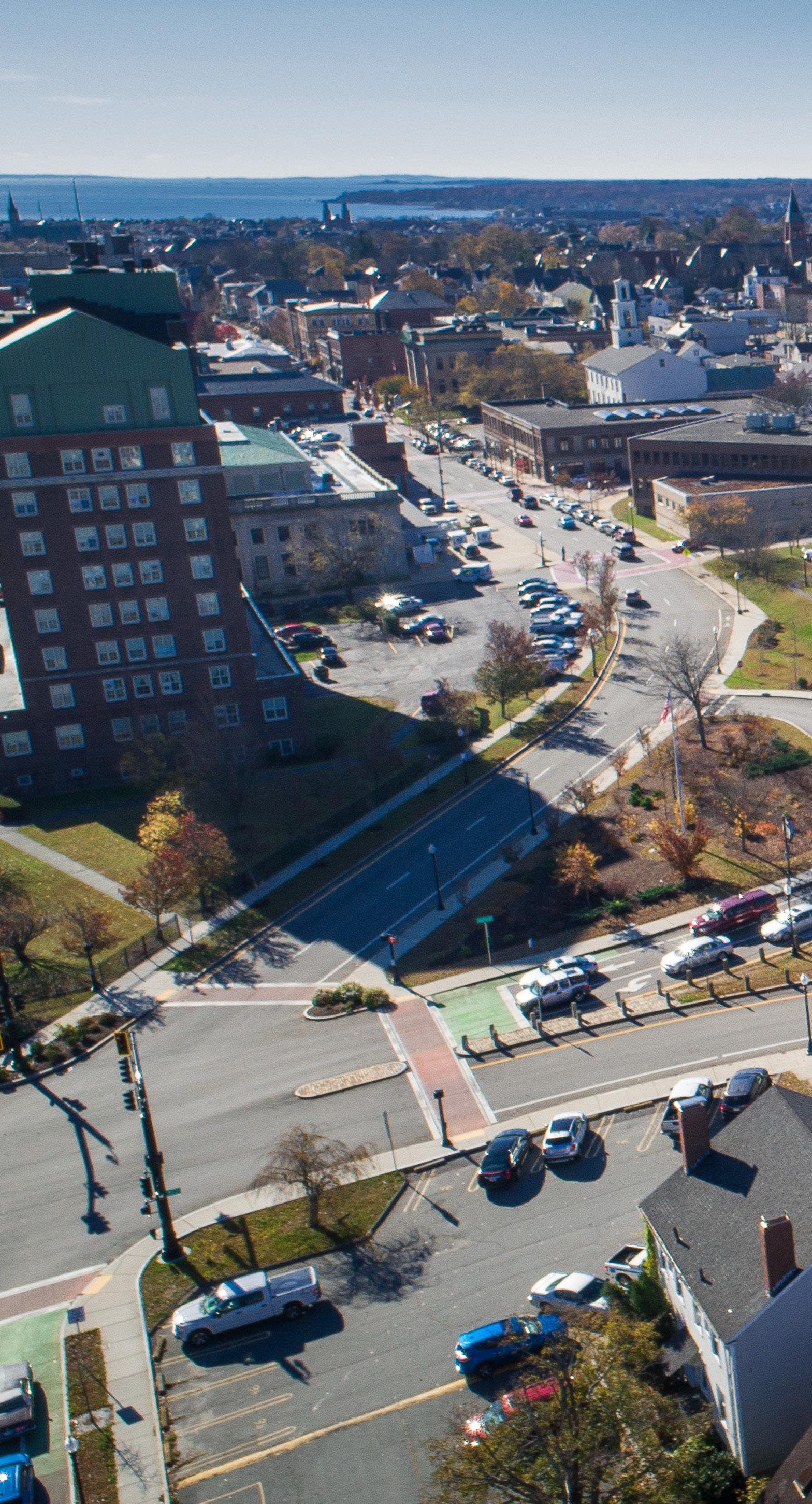
By focusing on private partnerships in the emerging ocean-based industries, the project builds on our Strengths in the Marine Science and Technology (MST) sectors and utilizing our strategic deep water ports on Buzzards and Mount Hope Bays.
By considering our region’s role in developing and maintaining modern, resilient infrastructure, the project takes on the threat of and advances strong, sustainable economic activity.
And by introducing cutting-edge redevelopment activities on former industrial sites, the project explores Opportunities for brownfield remediation while advancing workforce development partnerships with our regional institutions, cleaning environmental resources for our communities, and creating good jobs for our workers.
To the greatest extent possible, we have crafted every initiative in our CEDS in this way. Every project plays a role in addressing liabilities while leveraging assets. Every partnership seeks to improve social, economic, and environmental well-being. Every action plays a role in the overall Comprehensive Economic Development Strategy.
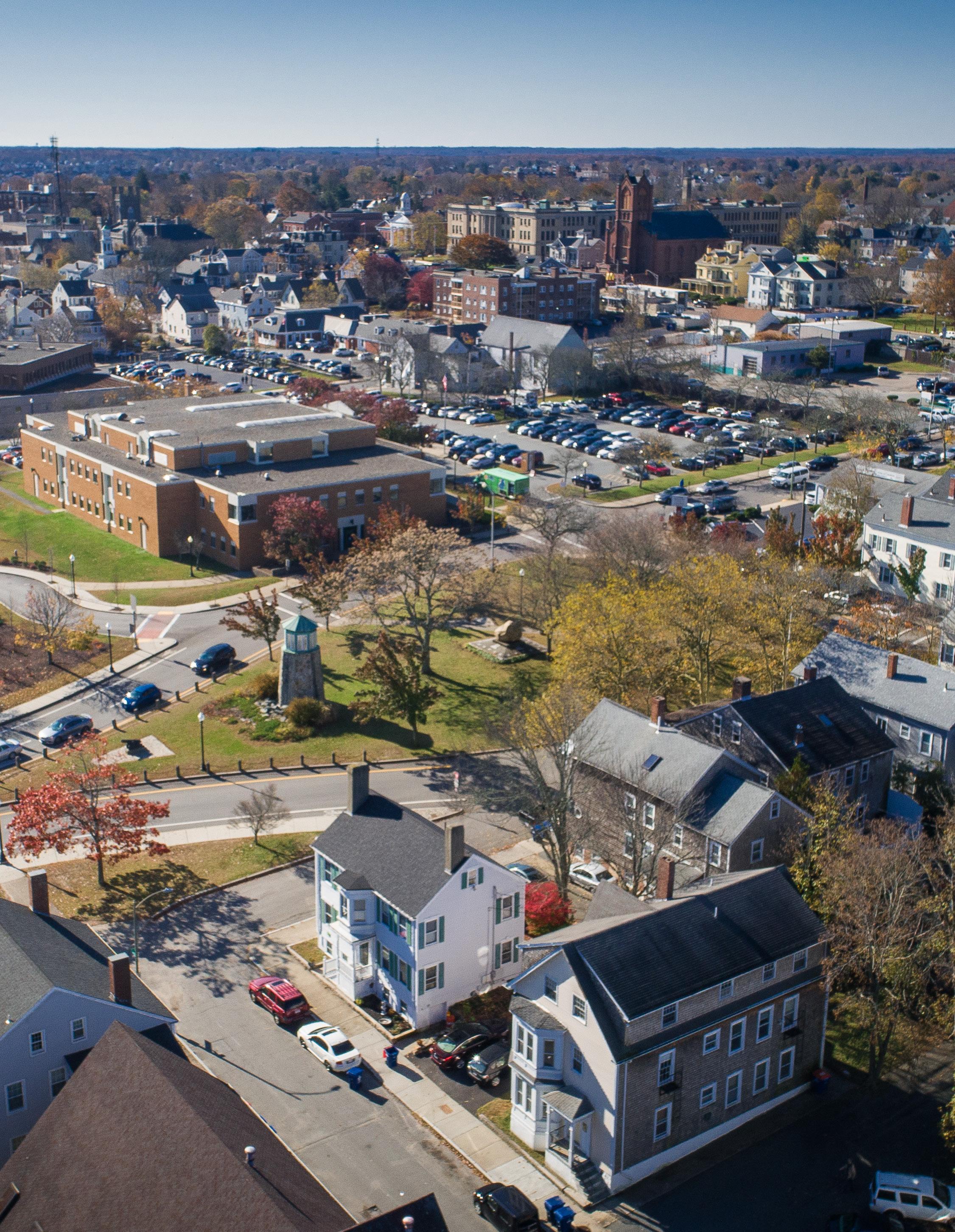
An essential, honest assessment of Regional Strengths, Weaknesses, Opportunities, and Threats.
SWOT analysis is a tried-and-true exercise. It presents an opportunity for any agency to take a clear-eyed look in the mirror. The SRPEDD region’s strengths, weaknesses, opportunities, and threats are presented below with supporting descriptions, data (often briefly cited and appearing in detail in the Appendix, where necessary),and anecdotal evidence from existing plans, articles, and other documents.1
Strengths
• Good, diverse infrastructure
• Lower housing costs and connections to Boston
• Ocean-based industry clusters
• Strong regional higher-education network
• Strength in healthcare, manufacturing, valueadded agriculture, and fishing
• Cities and large towns with growing and increasingly more diverse and educated populations
• Incredible coastlines, rivers, natural resources, and recreation
• Proximity to world-class institutions in Boston, Worcester, and Providence
Weaknesses
• Higher unemployment
• Workforce development efforts are not keeping pace with competitors and the modern economy
• Modern infrastructure investments are still required for more growth
• Our businesses and residents remain subject to fluctuations in utility rates
Opportunities
• Marine Science and Technology clusters.
• Strategic workforce development tailored to the “biotech” manufacturing, MST-based, and healthcare industries
• Comparatively lower housing costs and improved transit connections to Boston can lead to vibrant TOD/mixed-use development and attract younger, more educated residents
• Emerging arts and culture economies in New Bedford, Fall River, and other communities
• Brownfield remediation and redevelopment
• Numerous remaining development sites where we can leverage state and federal infrastructure funding to encourage growth Threats
• Extreme weather, sea level rise, and increased storm events
• Unforeseen economic and social disruptions, such as the recent COVID-19 pandemic
1. Please note that, in most cases, this CEDS includes data for commonly accessible geographies, such as counties, New England City and Town Areas (NECTAs), or Metropolitan Statistical Areas (MSAs). For example, when reporting income, housing, or employment data, we use Bristol and Plymouth Counties or relevant Metropolitan Statistical Areas (MSAs, such as Providence-Warwick RI MSA and Boston-Cambridge-Nashua MA-NH MSA) for comparisons.
• An aging population with increasing need for social services
• Perceptions of persistently high unemployment and low educational attainment
• Moderate traffic congestion in portions of the region


The SRPEDD region is well-served by local, regional, and interstate roadways. According to the 2020 SRPEDD Regional Transportation Plan2, the network is well-maintained and only experiences minor-to-moderate congestion and safety issues. With a stable power grid and broadband infrastructure (such as the OpenCape network33), we are likewise well-connected to modern electrical, broadband, and emerging energy infrastructure required to compete in the 21st century economy. The region hosts examples of unique private facilities, such as Dighton’s Taunton River Desalination Plant (owned by Aquaria Water LLC). Lastly, we are home to several deep-water ports located on Mt. Hope Bay and Buzzards Bay that permit direct access to shipping lanes to Vineyard Sound, Nantucket Sound, and the North Atlantic beyond.
2 For more information, please see Appendix C of the SRPEDD Regional Transportation Plan, 2020.
3 For more information, please see the OpenCape websitewww.opencape.org/

Our housing costs are competitive. Bristol and Plymouth Counties have comparatively more affordable Median Sales Prices for Single-Family homes4 – a benefit to households as they make decisions about where to live and work. Additionally, comparing the region’s four cities to Boston and Providence reveals an even larger price difference and regional advantage. Finally, the long-anticipated South Coast Rail project is set to begin direct Massachusetts Bay Transportation Authority (MBTA) commuter rail service to Boston in late 2023; these new transit connections will allow workers to move to the region and permit easier access to metro Boston for business and pleasure.
4 2020 Median Sales Prices for Single-family homes. Massachusetts: $447,000; Plymouth County: $437,000; Bristol County: $356,000

Southern New England and Southeastern Massachusetts are home to an emerging cluster of businesses and academic institutions focused on the economic potential of the ocean. Our region is uniquely positioned – thanks to its ports, infrastructure, and organizations – to participate in this promising new economic sector.5 And while these emerging technologies and industries hold incredible potential, they will only add to our region’s existing ocean-based economy, with New Bedford leading the way as the nation’s leading fishing port and an enormous economic engine for the Commonwealth.6
5 For more information on this emerging Opportunity, please see the “Marine Science and Technology clusters” Opportunites on page 20.
6 In addition to fishing, the New Bedford/Fairhaven Harbor also handles cargo and recreational boating. The port’s annual value is roughly $11 Billion with nearly 7,000 direct jobs. Economic Impact Study of the New Bedford/Fairhaven Harbor, 2018, page 3 - www.portofnewbedford. org/wp-content/uploads/2019/04/Full-2019-Martin-Report.pdf

The region hosts several thriving institutions for higher education. These include vocational and technical institutions, four-year colleges, and universities offering advanced degrees. Each school offers opportunities for innovation and business incubation, workforce development and targeted training to fill marketplace demand, and numerous partnerships.
• University of Massachusetts-Dartmouth, including its School for Marine Science and Technology (SMAST) and the Center for Innovation and Entrepreneurship
• University of Massachusetts Law School (Dartmouth)
• Wheaton College (Norton)
• Bristol Community College (Fall River and numerous satellite campuses)
• New Bedford Quest Center
• Bristol-Plymouth Vocational High School
• Bristol County Agricultural High School
• Several nearby institutions include:
• Massachusetts Maritime Academy (Borne)
• Woods Hole Oceanographic Institution (Falmouth)
• Bridgewater State University
• Stonehill College (Easton)
• Massasoit Community College (Brockton and satellite campuses)
Our region hosts important industry clusters that present further opportunity for economic growth. These regional clusters are either in line with or superior to their counterparts in the already strong Massachusetts economy. This is especially true for7:
• Manufacturing (NAICS code 31-33), which accounts for 10.6% of employment in Bristol County (compared to 6.9% in Massachusetts, as a whole).
• Healthcare (NAICS code 62), which accounts for 20.0% employment in Bristol and 18.7% in Plymouth County (compared to 18.7% in Massachusetts, as a whole).
• Fishing (and other Agriculture, NAICS code 11), which accounts for 1.9% employment in the New Bedford NECTA (compared to 0.3% in Massachusetts as a whole). While this industry is relatively modest in terms of direct employment, the New Bedford/Fairhaven port is a large and growing economic engine in terms of total economic output and all associated activity.
7 All data from the MA Executive Office of Labor and Workforce Development (EOLWD), 2020.

Similarly, our value-added agricultural industry – primarily cranberry growing in Plymouth and Bristol Counties – is a growing asset. For example, between 2007 and 2017, crop values in Plymouth County increased by 7%; values in Bristol County grew by 15%. These rates compare to 3% in Massachusetts as a whole.8
8 U.S. Department of Agriculture; see Agriculture section in the Appendix
We have hundreds of miles of coastline (that rival Cape Cod and the Islands in terms of beauty and access), numerous state parks, one of the few urban National Parks in the U.S. in downtown New Bedford, the Wild and Scenic Taunton River, productive and beautiful farms, bogs, and orchards, and diverse active and passive recreation opportunities, such as the emerging South Coast Bikeway, throughout the region.9
9 The South Coast Bikeway will be a 50-mile continuous system of bike paths, multi-use paths and bike lanes connecting existing routes in Rhode Island to Cape Cod. For more information, please see the project website - www.southcoastbikeway.com

Our region is growing. Between 2010 and 2020, Bristol and Plymouth counties grew at 2.7% and 5.0%, respectively.10 And while these overall rates are lower than that of Massachusetts as a whole,11 many of our communities are growing and thriving. New Bedford and Taunton both grew at a rate of 6.3% and welcomed a total of nearly 10,000 new residents. Fall River grew at a rate of 5.8% with a net change of over 5,000 new residents. Mid-sized towns, such as Middleborough (4.9%), Wareham (6.8%), and North Attleborough (7.4%) also grew – and these three communities alone welcomed a total of nearly 5,000 new residents. Finally small towns also did their part – for example, Dighton grew by 1,000 residents at a rate of 14.3%. In short, communities across the region are growing and becoming more racially diverse and educated.12
10 All data from the U.S. Census.
11 Driven by growth in Metro Boston, Massachusetts grew at a rate of 5.8% over the same period
12 See table B. Racial-Ethnic Profile and D. Educational Attainment in the Appendix.

Southeastern Massachusetts is strategically located near Boston’s cluster of world-class universities, such as Boston University, Northeastern University, Harvard, Tufts, and MIT. Nearby Worcester is home to Clark University, Worcester Polytechnic Institute, and College of the Holy Cross. We are even closer to Providence, which hosts Brown University, Providence College, and the Rhode Island School of Design (RISD). Each of these schools produce potential modern workers – and institution presents opportunities for economic development partnerships.
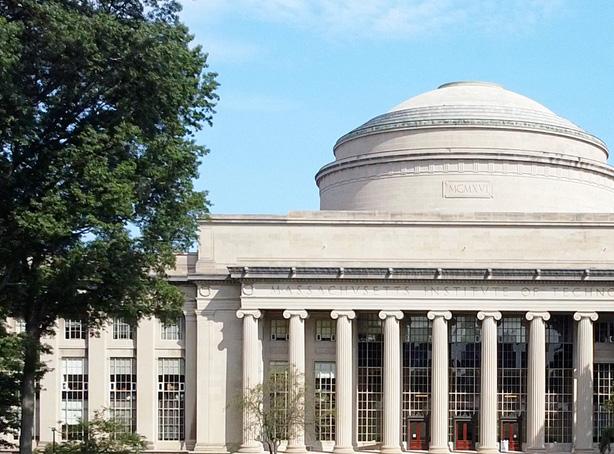
The region has persistently higher unemployment rates when compared to the state. This structural issue has been well documented in prior CEDS reports and persists even through the post-COVID-19 recovery. In October 2021, the Massachusetts unemployment rate was 4.6% compared to 5.2% in Bristol County and 4.9% in Plymouth County; one-year later, in October 2022, the Massachusetts unemployment rate was 3% compared to 3.6% in Bristol County and 3.1% in Plymouth County.13 Our levels of advanced education are lower than in Massachusetts.
13 All data from the Massachusetts Executive Office of Labor and Workforce Development.

development efforts are not keeping pace with competitors and the modern economy
In Bristol County, 18.3% of residents have a college degree while 10.4% have a post-graduate degree; in Plymouth County, those percentages are slightly higher, at 23.7% and 13.9%, respectively. However, both counties lag behind Massachusetts as a whole, where 24% of the population has a college degree and 19% has a post-graduate degree.

The region’s prior CEDS advocated for a “focus on infrastructure (roadways, water, sewer, utilities, and fiber optics) that support new development and expansion of business and industrial parks.” 14 In order for the New Bedford Fairhaven Harbor to continue to grow, “it is critical that investments [such as] harbor dredging continue, as this will further enable the expansion of local ship and boatbuilding and repair, the ability to handle additional commercial fishing vessels, and the expansion and addition of new lines of operations …”15 The region’s Transportation Improvement Program (TIP) calls for hundreds of millions of dollars of additional investment in our roads, bridges, and multi-modal facilities. In short, even though significant progress has been made (as
14 SRPEDD Comprehensive Economic Development Strategy (CEDS), 2018, page 65.
15 Economic Impact Study of the New Bedford/Fairhaven Harbor, 2019, page 10.
documented above in our Recent Success Stories), the region still needs significant capital investment to maintain its existing facilities and build new modern infrastructure.

Our businesses and residents remain subject to fluctuations in utility rates.
Massachusetts has the fourth highest electricity retail rate in the country with an average of 19.06 cents per kilowatt hour (kWh), only behind California, Alaska, and Hawaii.16 Rates are continuing to rise, with residents and business owners across the Commonwealth currently coping with a series of winter-time utility rate hikes, which have more than doubled the average customer’s monthly electric bill.17 These high costs, when coupled with aging transmission infrastructure, make it incredibly
16 U.S. Energy Information Administration Electricity Profiles, 2021www.eia.gov/electricity/state/
17 NBC Boston’s “Mass. Residents Shocked By ‘Absurd’ Hike in Utility Bills: ‘From $90 Bill to $360’”, 2022 - www.nbcboston.com/news/local/ mass-residents-shocked-by-hike-in-utility-bills/2910357/
important for the region to consider pursuing alternative energy sources while working to financially protect their most vulnerable households, who will largely bear the brunt of a departure from conventional sources.18
18 Energy News Network “As wealthy towns go electric, who will pick up the tab for aging gas infrastructure?”, 2022 –www.energynews.us/2022/09/02/as-wealthy-towns-go-electric-who-willpick-up-the-tab-for-aging-gas-infrastructure/
Our region is strategically located to build on its existing Marine Science and Technology clusters and become the center of New England’s ocean-based industries.
Business centers across Southeastern Massachusetts – and particularly the deep-water ports of New Bedford/Fairhaven Harbor and Somerset’s Brayton Point – are all situated between two clusters of ocean-based industries. These are collectively known as “Marine Science and Technology,” or “MST-based” firms and organizations. The existing industry clusters are located on the border of our region on and around Aquidneck Island, RI, and Upper Cape Cod. “The sector employs nearly 15,000 workers across 136 organizations. Looking at only private sector employment … MST employs more people than other high-tech sectors, such as medical devices, biopharmaceuticals, and information technology & analytical instruments.”
19 This sector
19 Charting the Course: A Regional Assessment of the Marine Science and Technology Sector in Southeastern New England, 2019, UMass Dartmouth, Public Policy Center, Page i.
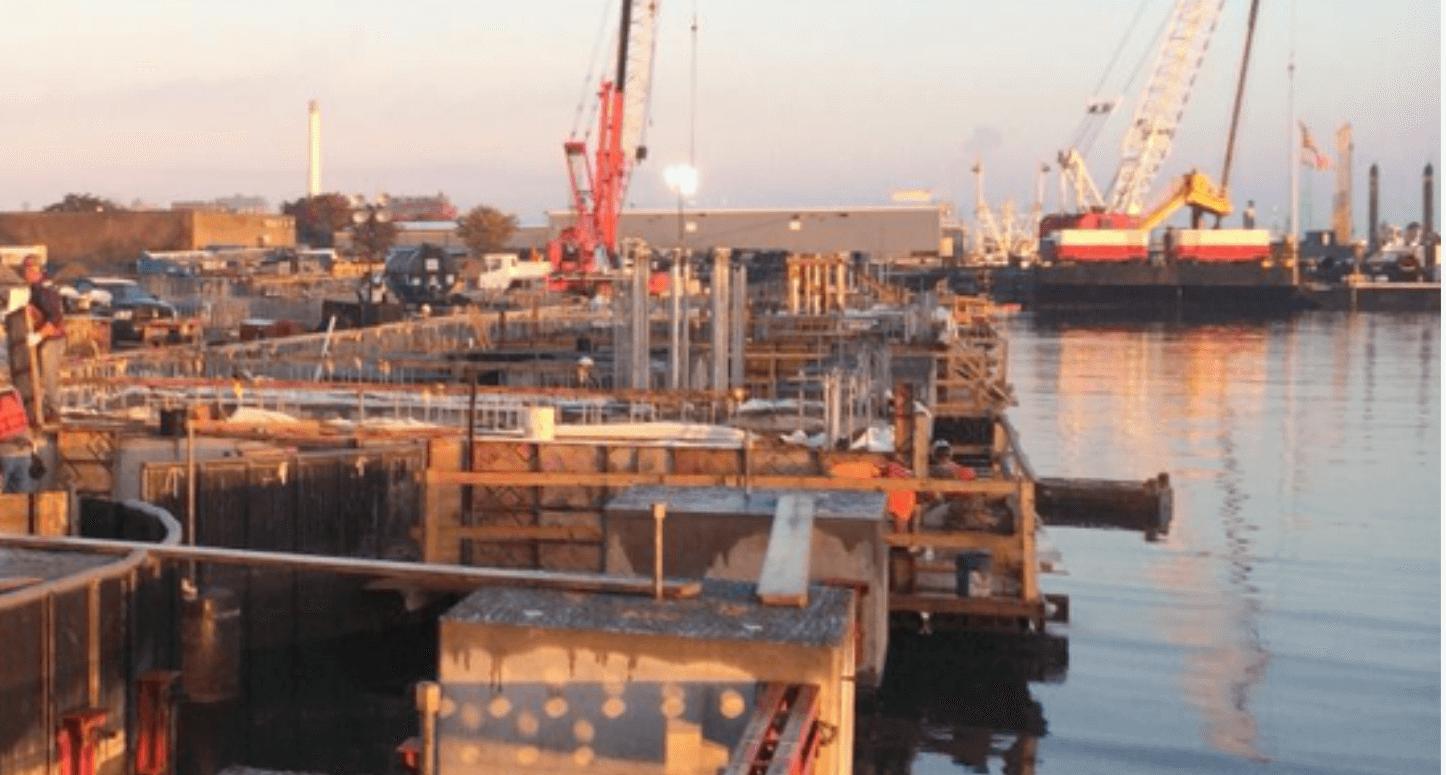
includes activities and specialized industry clusters such as defense, fishing and aquiculture, and ocean robotics. In short, the ocean-based economy presents significant growth potential for our region’s economy – especially with further investments in infrastructure, workforce development, and renewed coalition-building.
Improved educational attainment can be advanced through strategic workforce development that is tailored to the “biotech” manufacturing, MST-based, and healthcare industries.
The 2018 CEDS identifies workforce development as a necessary strategy for growing the region’s economy and expanding our promising industry sectors. Similarly, the 2019 Charting the Course MST study highlights the need for coordinated public-private partnerships between the region’s governments, businesses, and academic institutions – especially in the fields of engineering, systems and software engineering, acoustics, manufacturing and production. The region has the necessary foundation for these initiatives in technical high schools, community colleges, and universities. The region must therefore use successful models for workforce development from across the nation to cultivate and sustain the necessary supply of skilled workers for our region’s target industries.

Comparatively lower housing costs and improved transit connections to Boston can lead to vibrant TOD/mixed-use development and attract younger, more educated residents.
Our region’s cities and towns have significantly lower median housing prices than the metro Boston area.20 In 2023 and beyond, with the arrival of new MBTA Commuter Rail service to Fall River and New Bedford, cities and towns will also continue to take the initiative to develop walkable and well-designed transit-oriented development (TOD) districts that offer attractive, market-rate and affordable housing alternatives so highly valued by younger, more educated workers.21 Notable examples of TOD developments and initiatives in the region include Attleborough, Mansfield, and New Bedford.22 Similar zoning changes and development opportunities.
20 Boston Metro’s median single-family house price rose to $900,000 (Larry Edelman, Boston Globe) in 2022. This is double or more than the median single-family house prices of Attleboro ($450,000), Fall River ($360,000), New Bedford ($347,000), and Taunton ($434,000) (Warren Group).
21 For more information, please see page 7, Transit-Oriented Development in the States, National Conference of State Legislatures, 2012. www.ncsl.org/documents/transportation/TOD_final.pdf
22 For more information on Mansfield and Attleborough, see “Exploring Housing at Different Densities” at www.srpedd.org/MBTA-Communities; for more on New Bedford TOD, see www.srpedd.org/New-Bedford-TOD

other communities.
Just as communities in the southeast experience growth from the industrial and commercial sector, many are also turning to the revival of their Main Streets and Downtown areas. Communities such as Fall River and New Bedford published Arts and Culture Plans to consolidate their efforts in the Creative Economy and to complement Urban Renewal Plans, Downtown Economic Development Plans, and Waterfront Inactivates – all of which consider the importance of using art to attract commerce, visitors, and new residents to the region.

Southeastern Massachusetts has numerous brownfield sites where industrial activity has taken place for over 200 years. Sites situated along river corridors, such as the Ten-Mile River, initially powered jewelry factories, foundries, and other production activities.23 Other sites hosted nonrenewable energy generation facilities, such as the decommissioned Brayton Point and Montaup coal-fired electrical plants in Somerset. Proactive
23 In 2022, SRPEDD received an EPA Brownfields Community Assessment Grant to work to remediate and explore redevelopment and reclamation of several contaminated sites in the Ten-Mile River and Mount Hope Bay Watersheds in the towns of Plainville, Attleboro, North Attleborough, Swansea, and Seekonk.
remediation of brownfields will contribute to available redevelopment sites. This important work can also improve the health of contaminated waterbodies and ecosystems, create new public access to riverfronts and coastlines, improve conditions in environmental justice communities, and otherwise improve regional quality of life – both perceived and lived.
Our region has numerous remaining development sites where we can leverage state and federal infrastructure funding to encourage growth.
The region is fortunate to have thousands of remaining acres of developable land. Many of these sites are profiles in detail in Section C. Priority Sites. They present a diverse portfolio of development, infill and expansion, redevelopment, and brownfield remediation opportunities for business growth.
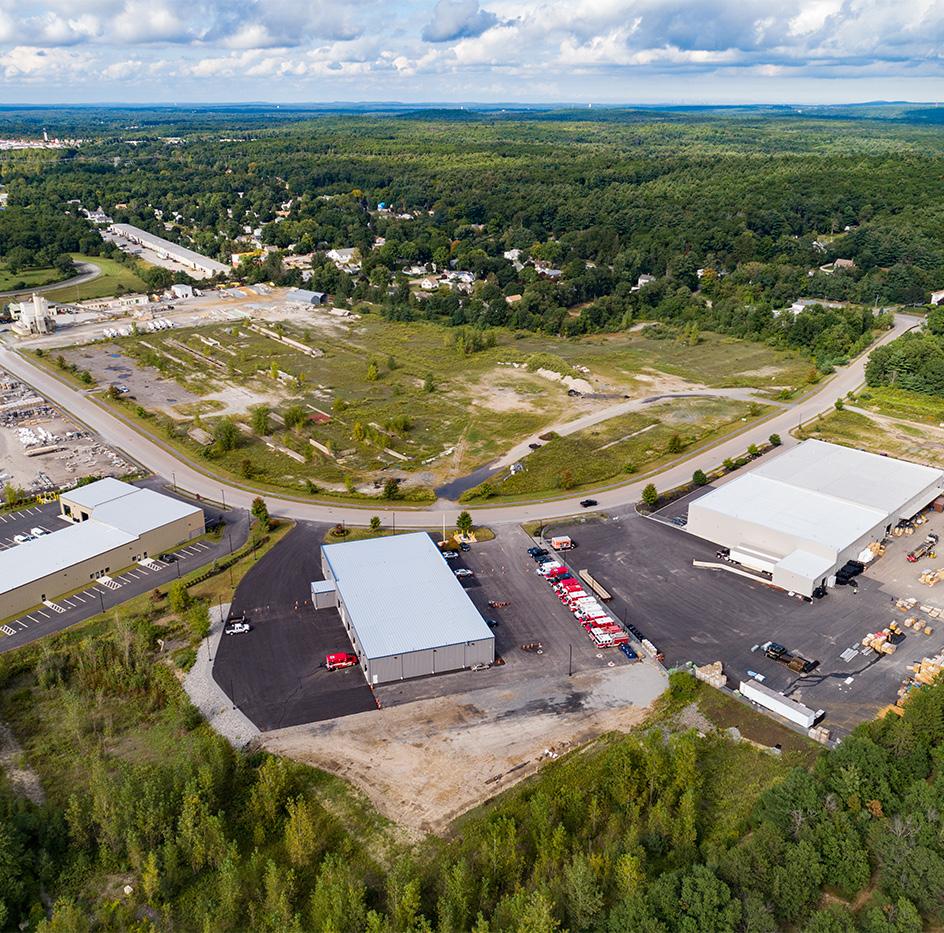


Economic growth and stability in Southeastern Massachusetts are directly tied to the overall health of our natural environment, infrastructure systems, local economies, social capital networks, and governance structures. The resilience of these interdependent systems determines our region’s ability to face extreme challenges brought on by extreme weather, economic downturn, and other potential shocks, such as the ongoing pandemic. Over the course of 2023 and 2024, the ongoing SRPEDD Regional Resilience Plan (SRRP), which is funded by U.S. EDA and the Commonwealth of Massachusetts, will create a comprehensive set of strategies to address these threats to our region. Moreover, SRRP will advance methods to prepare for, mitigate, respond to, and recover from such events, be they singular disasters or long-term climatological and economic shifts. 24
24 For more information, please see Section E. Economic Resilience and www.srpedd.org/regional-resilience-plan.
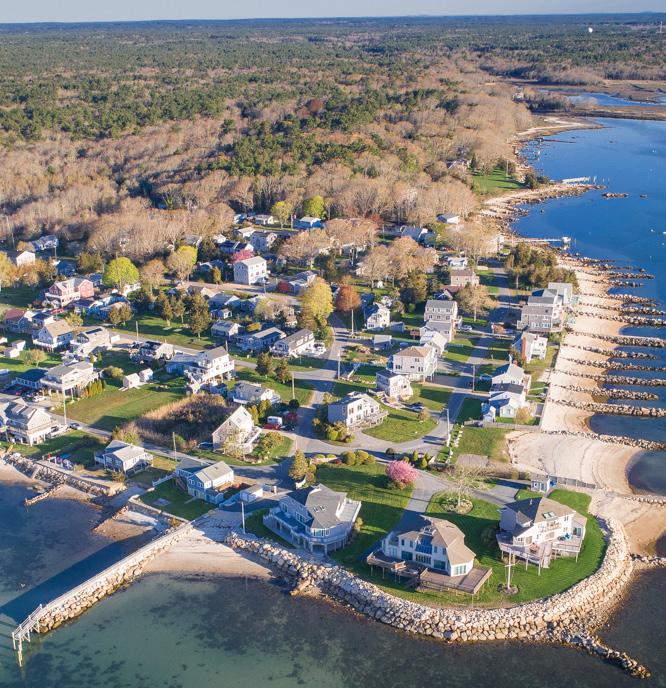
As is the case with most regions in the northeast, our population is aging. Between 2010 and 2020, the median age in Bristol County rose from 39.2 years to 41 years – a change of 1.8 years. In Plymouth County, the median age rose from 40.5 to 42.2 over the same period – a change of 2.7 years. This compares to Massachusetts, which only rose from 38.7 to 39.5 – a change of only 0.8 years. During the same time period, costs of state of MA elder services increased 136.1%25 Additionally, the relative cost of providing social welfare, per resident, becomes 3-5 times higher after the age of 65.26 With each baby
25 Massachusetts Budget and Policy Center, 2022
26 Consumer Affairs, Rubin, 2022, Elderly population in U.S. by statewww.consumeraffairs.com/homeowners/elderly-population-by-state.html
boomer aging beyond 65, MA is projected to increase in overall elder population to 21% by 2030.27 As this projected demographic group subsequentially increases the dependency ratio – lower tax revenue from less workers combined with higher spending commitment28 – these trends further highlight the 10.6% of the elderly in MA currently at or below poverty.29 In short, there is an immediate need to address the changing economic future for senior communities in Massachusetts and the region.
27 UMass Donahue Institute, 2013. Aging population expected to slow growth in Massachusetts over long term.
28 Borji, 2021, 4 Global Economic Issues of an Aging Population.
29 United States Census Bureau, 2021.
Our continued prosperity will also rely on our ability to prevent, withstand, and recover from disruptions to our economic system. And – while we acknowledge that these disruptions often originate from larger market changes, regional industry downturns, or external shocks, such as COVID-19 – our region seeks to build lasting “economic resilience” by anticipating risks, evaluating their potential impact on economic assets, and building responsive capacity. The SRPEDD Regional Resilience Plan (SRRP) project, which is detailed in Section E. of this document, seeks to address these threats.

The region’s unemployment rates are typically higher than those of Boston, Providence, and the states of Massachusetts and Rhode Island. Similarly, our educational attainment is lower. This negative perception is a barrier to overcome when attracting and recruiting new high-tech firms to the region.
Traffic is an issue for all major metropolitan areas in the northeast – and ours is no different. Some of our region’s most important arterial roadways, intersections, and interchanges – especially along Route 24, Route 6, Route 138, I-195, and I-495 –have moderate congestion issues during the peak morning and afternoon commutes. SRPEDD’s Regional Transportation Plan and Transportation Improvement Program (TIP) address these issues through various investments and interventions; to the greatest extent possible, these should be
coordinated with other infrastructure improvements to improve access, productivity, and reliability at target economic development sites.30
30 For more information, please SRPEDD’s 2020 Regional Transportation Plan and its Appendix C (www.srpedd.org/transportation/ regional-transportation-planning/regional-transportation-plan-rtp); information on the Southeastern Massachusetts Metropolitan Planning Organization’s TIP and TIP Evaluation Criteria (www.srpedd.org/ transportation/regional-transportation-planning/transportation-improvement-program-tip); and SRPEDD’s SHRP2/EconWorks research sponsored by FHWA and AASHTO and presented at the 2016 American Planning Association National Conference in Phoenix, AZ.
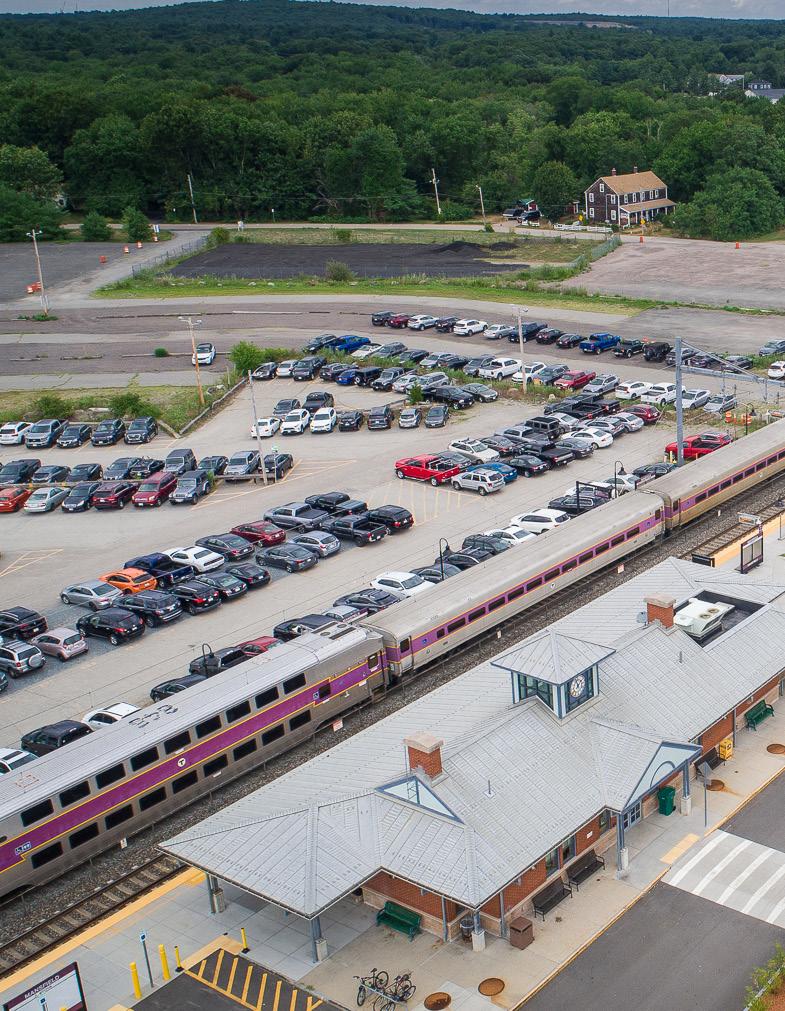
As stated above, our EDD’s Vision can be summarized as “Flexible, Collaborative, and Resilient Growth in Southeastern Massachusetts;” this growth will match all our efforts to our region’s Strengths, Weaknesses, Opportunities, and Threats. To do this, we will pursue this three-part strategy – the “Strategic Direction of our work program – as we advance every initiative in this CEDS.
Good public sector planners understand that the business and development communities look in our direction to help generate reliable partnerships. To play this role, we must set clear goals, rely on good data, and create reasonable expectations – all in an effort to provide sufficient, necessary, but not excessive planning that can adapt to changing conditions. For example, recent economic downturns, such as the Great Recession and the COVID-19 pandemic, have humbled policy-makers and business leaders with a wide range of challenges that required us to revisit our best-laid plans. To acknowledge this, our streamlined CEDS seeks to remain flexible. While our general direction for the region, the agency, and each unique project will remain on-track to the greatest extent possible, we are also prepared to address changes through open-minded collaboration with our partners.
Our numerous partners are key to the region’s future economic growth. These include U.S. EDA, the Commonwealth of Massachusetts, the 27 cities and towns in our district, the region’s non-profits and academic institutions, and – of course – our numerous private sector firms and entities. As we implement and update this CEDS, SRPEDD will make every effort to consult with all relevant partners. As we execute existing projects and develop new ones, we will seek the insights and priorities of our public and private sector counterparts.
Our region’s economic growth will depend on more than the proactive economic development initiatives outlined below. Our continued prosperity will also rely on our ability to prevent, withstand, and recover from disruptions to our economic system. And – while we acknowledge that these disruptions often originate from larger market changes, regional industry downturns, or external shocks – our region seeks to build lasting “economic resilience” by anticipating risks, evaluating their potential impact on economic assets, and building responsive capacity. In short, this CEDS recognizes that fostering our regional economic resilience entails both establishing sustainable, long-term strategies to withstand disruptions and adopting responsive projects and initiatives that build new capacity among our regional stakeholders that help us avoid disruptions.

Many of the Priority Sites and Priority Projects/Partnerships that appear below represent long-held strategic goals. They have appeared – in some shape or form – in numerous planning efforts that came before this document. These include: prior regional Comprehensive Economic Development Strategies; local, regional, and state Priority Development Area plans and other priority investment areas, such as District Improvement Financing (DIF) and Tax Increment Financing (TIF) designations; and local master plans, economic development plans, Chapter 43D designations, and other incentive and permitting programs.
Additionally, these key sites and initiatives are the subject of regular public presentations to and discussions with the Regional Economic Development Strategy Committee (RESC); they are discussed during regular project scoping and project development meetings with potential partners in the public and private sectors; and – most importantly – they are frequent topics at working sessions between SRPEDD’s senior staff and our colleagues at the U.S. Economic Development Administration.
Moving forward, it is important to note that SRPEDD will also respond to new U.S. EDA recommendations that CEDS documents should be flexible and responsive to changing economic conditions by making
room for annual updates, tracking performance measures, and creating direct links to our new EDD web page. In practice, this will mean that, as we achieve goals and new ideas emerge, we will add and subtract from the following priorities to ensure that this CEDS, its subsequent updates, and all its future iterations are as current and nimble as possible.
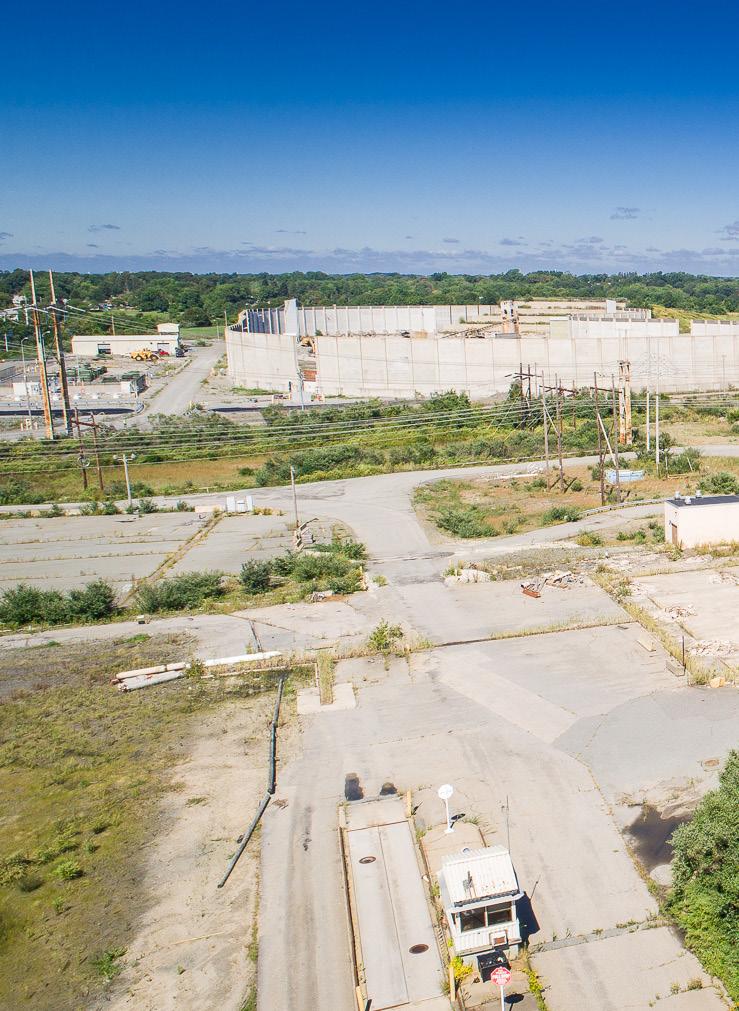

Somerset | 1 Brayton Point Road
One of two decommissioned coal-fired power plants in Somerset, this site has already benefited from significant U.S. EDA investment that is crucial to future redevelopment.31 Thanks to its deep-water port – a rare and strategic asset along U.S. East Coast – and strategic location on Mount Hope Bay, Brayton Point offers significant opportunity to contribute to electricity transmission capacity and the Marine Science and Technology sector.
Primary Owner(s): Commercial Development Co.; Prysmian Group
Stakeholders: Town of Somerset; Brayton Point Neighborhood; Commonwealth of Massachusetts; Prysmian Group
Total Available Acres: 300
Development Type: Brownfield Remediation and Redevelopment
Proposed Use: Manufacturing and Assembly, Energy Storage and Distribution, Maintenance and Service.
Proposed Investments and Initiatives: Prysmian Group proposes a 550,000 s.f. manufacturing facility on 47 acres. This $300 million private investment would create over 350 new jobs. The project would require new roadways and potential water and sewer infrastructure estimated at between $2-$4 million.
Related Sites: The nearby Montaup site (Somerset)32 has potential for deep-water port activities. The site has been advertised for sale along with its companion property across the Taunton River in Fall River at Weavers Cove, which has direct rail freight frontage.
The ongoing $20 million U.S. EDA-funded Pier Fendering and Repair and North Terminal II Expansion project directly supports New Bedford’s 31 www.eda.gov/archives/2022/success-stories/edd/stories/somerset-ma.htm 32 www.masscec.com/resources/montaup-power-plant
• Good, diverse infrastructure
• Competitive housing costs and new transit connections to Boston
• Strength in health care, manufacturing, value-added agriculture, and fishing
• Cities and large towns with growing and increasingly more diverse and educated populations
• Despite gains, our workforce development efforts are not keeping pace with competitors and the modern economy
• Modern infrastructure investments – especially in ports, water, sewer, and broadband – are still required for more growth
• Improved educational attainment can be advanced through strategic workforce development that is tailored to the “biotech” manufacturing, MST-based, and health care industries
• Comparatively lower housing costs and improved transit connections to Boston can lead to vibrant TOD/mixed-use development and can continue to attract younger, more educated residents
• Our region has numerous remaining development sites where we can leverage state and federal infrastructure funding to encourage growth
• Perceptions of persistently high unemployment and low educational attainment
New Bedford
commercial fishing and emerging Marine Science and Technology sector.33 This project, which officially broke ground in 2022, is one of the largest EDA investments in Massachusetts. New Bedford/ Fairhaven Harbor has numerous opportunities for further investments that will enable these important regional industries to both remain viable and leverage significant growth opportunities presented by ocean-based industries.
Primary Owner(s): New Bedford Port Authority; City of New Bedford; several private entities
Stakeholders: New Bedford Port Authority; City of New Bedford; several private entities
Development Type: New development, Port Infrastructure, Brownfield Remediation, Redevelopment
Proposed Use: Commercial Fishing, Manufacturing and Assembly, Energy Storage and Distribution, Maintenance and Service, Other MST activities
Proposed Investments and Initiatives: This project requires continued investments including dredging and expansion of the Harbor. Reconstruction of Homer and Leonard’s Wharf is necessary to advance development.
Related Sites: Homer’s and Leonard’s Wharves; numerous other sites in the Harbor.
The City of New Bedford is currently seeking private development partners to transform part of the Whaling City Golf Course into a 100-acre business park, ideally an Advanced Manufacturing Campus.34
33 For more information, please see the U.S. EDA website - www.eda. gov/archives/2021/news/press-releases/2020/10/20/new-bedford-ma. htm
34 The City is currently working with the development community to make amendments to and address feasibility in an RFP issued in April
• Growing ocean-based industry clusters
• Strength in health care, manufacturing, value-added agriculture, and fishing
• Despite gains, our workforce development efforts are not keeping pace with competitors and the modern economy
• Modern infrastructure investments – especially in ports, water, sewer, and broadband – are still required for more growth
• Our businesses and residents remain subject to fluctuations in utility rates
• Our region is strategically located to build on its existing Marine Science and Technology clusters and become the center of New England’s ocean-based industries
• Improved educational attainment can be advanced through strategic workforce development that is tailored to the “biotech” manufacturing, MST-based, and health care industries
• Brownfield remediation and redevelopment
• Extreme weather, sea level rise, and increased storm events
• Perceptions of persistently high unemployment and low educational attainment
New Bedford | 581 Hathaway Road
At full build-out, the new business park would support about 1 million square feet of industrial and commercial space, create 1,000 new jobs, and generate approximately $2.6 million in annual tax revenue. Preliminary planning ongoing.
Primary Owner(s): City of New Bedford
Stakeholders: City of New Bedford; New Bedford Regional Airport
Total Available Acres: 100
Development Type: Redevelopment
Proposed Use: Warehouse and Distribution, Manufacturing, Office, Health Care and Life Sciences, MST, other “cutting-edge” industries.
Proposed Investments and Initiatives: The project would require new roadways and potential water and sewer infrastructure. The site may also be eligible for incentive programs, such as Chapter 43D, Tax Increment Financing, or District Improvement Financing.
Related Sites: New Bedford Regional Airport and the nearby North New Bedford MBTA Commuter Rail station area and TOD District.
Located in the northern portion of Fall River are the Public Industrial Park, Commerce Park, and the South Coast Life Science and Technology Park, which covers approximately 900 acres. This area represents a major regional employment center hosting more 2020. A second RFP will be issued in 2023. www.newbedfordguide. com/new-bedford-begins-outreach-community-explore-changes-whaling-city-golf-course/2022/10/12
• Good, diverse infrastructure
• Competitive housing costs and new transit connections to Boston
• Strength in health care, manufacturing, value-added agriculture, and fishing
• Cities and large towns with growing and increasingly more diverse and educated populations
• Despite gains, our workforce development efforts are not keeping pace with competitors and the modern economy
• Modern infrastructure investments – especially in ports, water, sewer, and broadband – are still required for more growth
• Improved educational attainment can be advanced through strategic workforce development that is tailored to the “biotech” manufacturing, MST-based, and health care industries
• Comparatively lower housing costs and improved transit connections to Boston can lead to vibrant TOD/mixed-use development and can continue to attract younger, more educated residents
• Our region has numerous remaining development sites where we can leverage state and federal infrastructure funding to encourage growth
• Perceptions of persistently high unemployment and low educational attainment
Fall River, Freetown | Access to this area is provided by Route 24, at exits 8A, Airport Road and 8B, as well as Innovation Way.
than 120 industries providing some 7,000 to 8,000 existing jobs serving the Greater Fall River area and the region. Further development is currently constrained by water and sewer capacity limitations.
Stakeholders: City of Fall River, Freetown, Surrounding Communities
Total Available Acres: Approximately 300
Development Type: Expansion
Proposed Use: Warehouse and Distribution, Manufacturing, Office
Proposed Investments and Initiatives: In 2021, EDA invested $1.3 Million to engineer and permit 27,000 linear feet of existing sewer to improve flow and capacity in the area through future upgrades and replacement. SRPEDD expects once this project is completed, the city will partner once again with the agency to pursue funding for construction.
Related Sites: Freetown Riverfront Executive Park
In 2020, the site was developed as a vehicle auction facility. This current use – large paved parking areas – has disturbed the site but does not represent full development potential.
• Good, diverse infrastructure
• Competitive housing costs and new transit connections to Boston
• Strength in health care, manufacturing, value-added agriculture, and fishing
• Cities and large towns with growing and increasingly more diverse and educated populations
• Despite gains, our workforce development efforts are not keeping pace with competitors and the modern economy
• Modern infrastructure investments – especially in ports, water, sewer, and broadband – are still required for more growth
• Improved educational attainment can be advanced through strategic workforce development that is tailored to the “biotech” manufacturing, MST-based, and health care industries
• Comparatively lower housing costs and improved transit connections to Boston can lead to vibrant TOD/mixed-use development and can continue to attract younger, more educated residents
• Our region has numerous remaining development sites where we can leverage state and federal infrastructure funding to encourage growth
• Perceptions of persistently high unemployment and low educational attainment
Freetown | 170 South Main St
Primary Owner(s): COPART of Connecticut, Inc.
Stakeholders: Town of Freeport
Total Available Acres: Approximately 400
Development Type: Infill/Expansion, Redevelopment
Proposed Use: The original development proposal for the site envisioned nearly 2.75 million s.f. of industrial/office park, retail, service, hotel/hospitality, and mixed-use residential uses.
Proposed Investments and Initiatives: The project would require new roadways and potential water and sewer infrastructure. The site may also be eligible for incentive programs, such as Chapter 43D, Tax Increment Financing, or District Improvement Financing.
Related Sites: None
In 2019, the site benefited from a $3.2 million Commonwealth of Massachusetts MassWorks grant to improve transportation access by creating a new access road and improving intersection signalization.
• Good, diverse infrastructure
• Competitive housing costs and new transit connections to Boston
• Strength in health care, manufacturing, value-added agriculture, and fishing
• Cities and large towns with growing and increasingly more diverse and educated populations
• Despite gains, our workforce development efforts are not keeping pace with competitors and the modern economy
• Modern infrastructure investments – especially in ports, water, sewer, and broadband – are still required for more growth
• Improved educational attainment can be advanced through strategic workforce development that is tailored to the “biotech” manufacturing, MST-based, and health care industries
• Comparatively lower housing costs and improved transit connections to Boston can lead to vibrant TOD/mixed-use development and can continue to attract younger, more educated residents
• Our region has numerous remaining development sites where we can leverage state and federal infrastructure funding to encourage growth
• Perceptions of persistently high unemployment and low educational attainment
Carver | Montello Street
The town also recently approved zoning changes to allow greater building heights in its Green Business Park district, as deemed necessary by the Carver Redevelopment Authority to attract modern facilities. The current development proposal is for a roughly 1.8 million-s.f. warehousing and distribution facility.
Primary Owner(s): Route 44 Development LLC and partners
Stakeholders: Town of Carver, Carver Redevelopment Authority and Water District
Total Available Acres: 300
Development Type: Infill/Expansion, Development
Proposed Use: Warehouse and Distribution, Manufacturing, Office
Proposed Investments and Initiatives: The project would require new roadways and potential water and sewer infrastructure.
Related Sites: None
One of the largest and most successful business parks in New England, Myles Standish is a vital economic engine for the region. While it is largely
• Good, diverse infrastructure
• Strength in health care, manufacturing, value-added agriculture, and fishing
• Despite gains, our workforce development efforts are not keeping pace with competitors and the modern economy
• Modern infrastructure investments – especially in ports, water, sewer, and broadband – are still required for more growth
• Our region has numerous remaining development sites where we can leverage state and federal infrastructure funding to encourage growth
• Perceptions of persistently high unemployment and low educational attainment
Taunton | Myles Standish Boulevard/Industrial Park Road/Dever Drive/Charles F. Colton Road
built-out – with nearly 6 million s.f. of development and over 7,000 jobs – the park still presents infill/ expansion and redevelopment opportunities.
Primary Owner(s): Numerous
Stakeholders: City of Taunton, Taunton Development Corporation, Commonwealth of MA, numerous private entities
Total Available Acres: Approximately 100
Development Type: Infill/Expansion, Redevelopment
Proposed Use: Office Park
Proposed Investments and Initiatives: Roadway improvements, site preparation
Related Sites: Norton Commerce Center
This corridor offers redevelopment opportunities on several large vacant and underutilized sites; these
• Good, diverse infrastructure
• Strength in health care, manufacturing, value-added agriculture, and fishing
• Despite gains, our workforce development efforts are not keeping pace with competitors and the modern economy
• Modern infrastructure investments – especially in ports, water, sewer, and broadband – are still required for more growth
• Our region has numerous remaining development sites where we can leverage state and federal infrastructure funding to encourage growth
• Perceptions of persistently high unemployment and low educational attainment
Other Business Parks:
• Cabot (Mansfield)
• Attleboro Corporate Center
• Campinelli (Freetown)
• SouthPointe (Middleborough)
• Kendrick Road and Patterson Brook Road (Wareham)
• Industrial Drive (Mattapoisett)
Brownfield Reclamation and Redevelopment Sites:
• Plainville
• North Attleborough (Webster Mill, Sturdy Jewelry, and others)
• Somerset
• Swansea (Swan Fishing)
• Dighton
• New Bedford
Incredible Coastlines, rivers, natural resources, and recreation
Brownfield remediation and redevelopment
Rural Business, Agricultural, and Agricultural Tourism incubator projects
• Rehoboth
• Dighton
• Carver
Strength in health care, manufacturing, value-added agriculture, and fishing
Incredible coastlines, rivers, natural resources, and recreation
Downtowns
• New Bedford
• Fall River
• Taunton
• Attleboro
• North Attleborough
• Middleborough
• Mansfield
• Wareham (Merchant’s Way)
Cities and large towns with growing and increasingly more diverse and educated populations
Comparatively lower housing costs and improved transit connections to Boston can lead to vibrant TOD/ mixed-use development and can continue to attract younger, more educated residents
Emerging arts and culture economies in New Bedford, Fall River, and other communities
opportunities can build on recent U.S. EDA-funded investments in Somerset’s wastewater treatment facility and transmission infrastructure, the creation of a Wastewater District and Water Resource Management Plan, and a resulting SomersetSwansea intermunicipal agreement (IMA) for future wastewater service.35
Stakeholders: Towns of Somerset and Swansea; Commonwealth of Massachusetts; the Swansea Redevelopment Authority; numerous private entities.
Proposed Activities: The Town of Swansea recently received a $75,000 grant from the Massachusetts Department of Housing and Economic Development to study economic development feasibility along the Route 6/Route 118 corridor. Swansea intends to work directly with SRPEDD to secure additional matching funding that will enable a comprehensive needs assessment, build-out analysis, and implementation plan for several sites – all with the intent of identifying private investment opportunities and partnerships necessary for future applications to U.S. EDA construction funding to extend wastewater infrastructure west from Somerset along Route 6.
UMass Dartmouth’s School for Marine Science & Technology (SMAST) and Center for Innovation
35 www.eda.gov/archives/2022/grants/2017
• Strength in health care, manufacturing, value-added agriculture, and fishing
• Modern infrastructure investments – especially in ports, water, sewer, and broadband – are still required for more growth
• Our region has numerous remaining development sites where we can leverage state and federal infrastructure funding to encourage growth
• Perceptions of persistently high unemployment and low educational attainment
and Entrepreneurship (CIE) offer educational resources and a nexus point for industry leaders and the regional workforce in both marine sciences and technology. SMAST fosters relationships with regional industry, government, and nongovernmental agencies, including SRPEDD, on rising issues within the Blue Economy sector and related technological development. Furthermore, CIE provides an academic backdrop to foster innovation and facilities necessary to help early-stage companies and innovative ideas develop.
Stakeholders: University of Massachusetts (Dartmouth), SRPEDD, Private Stakeholders
Proposed Investments and Initiatives: SMAST provides industry collaborations, as well as research that guides local policymakers, climate science, and sustainable fisheries. CIE offers lab and manufacturing facilities to serve burgeoning entrepreneurs, industry partners, and provide education and workforce development opportunities. The Biomanufacturing Laboratory supports local and startup companies through the process of product development. With the latest equipment, the Mechanical Prototyping Laboratory facilitates the development of design prototypes, enabling companies to demonstrate their technology to investors in order to obtain patents or test products before final manufacturing. Through the industrial outreach program, industry partners can commission research, generate technical solutions, build prototypes for field demonstration or commercial exhibition, or evaluate new products and processes.
Confidence in the future of the Blue Economy in southeastern MA encouraged ocean-based industry
• Good, diverse infrastructure
• Competitive housing costs and new transit connections to Boston
• Strength in health care, manufacturing, value-added agriculture, and fishing
• Cities and large towns with growing and increasingly more diverse and educated populations
• Despite gains, our workforce development efforts are not keeping pace with competitors and the modern economy
• Modern infrastructure investments – especially in ports, water, sewer, and broadband – are still required for more growth
• Improved educational attainment can be advanced through strategic workforce development that is tailored to the “biotech” manufacturing, MST-based, and health care industries
• Comparatively lower housing costs and improved transit connections to Boston can lead to vibrant TOD/mixed-use development and can continue to attract younger, more educated residents
• Our region has numerous remaining development sites where we can leverage state and federal infrastructure funding to encourage growth
• Perceptions of persistently high unemployment and low educational attainment
and economic partnerships to develop across the region. Research and industry leaders actively seek partnerships in the South Coast region through higher education institutions. Those initiatives that developed include:
• National Offshore Wind Institute - Bristol Community College (BCC)
• Connect4Wind – UMass Dartmouth, BCC, Massachusetts Maritime Academy (2018) expanded to include Bridgewater State, Cape Cod Community College, Massasoit Community College (2021)
• Massachusetts Research Partnership in Offshore Wind – UMass (Dartmouth, Amherst, Boston, Lowell), BCC Northeastern University, Tufts, Massachusetts Maritime Academy, Woods Hole Oceanographic Institute
Stakeholders: Local Municipalities, SRPEDD, UMass Dartmouth, BCC
Proposed Investments and Initiatives: The National Offshore Wind Institute seeks to provide basic and advanced safety and technical training programs to prepare workers for jobs in construction, deployment, operations, and maintenance of offshore wind farms. In addition, Connect4Wind functions under a mission to complement the historic fishing industries and traditional uses of local ports, while considering the workforce and supply chain demands of offshore wind.
In 2022, the EPA awarded SRPEDD $500,000 to
• Growing ocean-based industry clusters
• Strong regional universities, colleges, and community colleges
• Despite gains, our workforce development efforts are not keeping pace with competitors and the modern economy
• Our region is strategically located to build on its existing Marine Science and Technology clusters and become the center of New England’s ocean-based industries
• Improved educational attainment can be advanced through strategic workforce development that is tailored to the “biotech” manufacturing, MST-based, and health care industries
• Unforeseen economic and social disruptions, such as the recent COVID-19 pandemic
• Perceptions of persistently high unemployment and low educational attainment
accomplish environmental assessment and site reuse planning at up to 10 sites within the Ten Mile River to Mount Hope Bay target area along the western edge of the district. Focusing on economic development through planning efforts in partnership with the project Brownfields Steering Committee - comprised of local communities, SRPEDD and relevant State and Federal agencies – this grant work will result in further understanding of next steps for environmental cleanup of these sites alongside a community-driven vision for their reuse as productive community assets. The sites addressed in this grant work, all of which are in State-designated Economically Distressed Areas, will be poised for private reinvestment in underutilized properties, creating jobs via commercial and/or mixed-use developments, while working to improve health and welfare in proximate residential neighborhoods.
Stakeholders: City of Attleboro; Town of North Attleborough; Town of Plainville; Town of Mansfield; Town of Seekonk; Town of Swansea; MassDEP; MassDevelopment; EPA
Proposed Investments and Initiatives: Immediate funded grant work includes three site reuse assessments, one site reuse vision, two site land use assessments, two site infrastructure evaluations, two resource roadmaps, 10 Phase I ESA’s, seven Phase II ESA’s, five site cleanup plans. Subsequent future work includes brownfields cleanup grants and activities, and site reuse support for relevant EDA and MassDevelopment Grants.
• Incredible coastlines, rivers, natural resources, and recreation
• Brownfield remediation and redevelopment
The Quest Center for Innovation first opened in 2005, housing municipal and state offices including the New Bedford Economic Development Council and the Massachusetts Small Business Development Council. The presence of such organizations affords unique access to small businesses who inhabit the incubator space. Since its revival in 2012, the Quest Center welcomed Groundwork, a co-working space offering a flexible working environment for local professionals.
• Growing ocean-based industry clusters
• Strong regional universities, colleges, and community colleges
Stakeholders: New Bedford Economic Development Council, Massachusetts Small Business Development Council
Proposed Investments and Initiatives: The Quest Center seeks to initiate small business growth at the city and regional scale. The Groundwork coworking space facilities the connection of small businesses to local and state resources. The Quest Center’s original plan envisioned a small business incubator space on the third floor (9,430 square feet), focused on fostering marine science and technology, software, and life science technologies.
• Despite gains, our workforce development efforts are not keeping pace with competitors and the modern economy
• Improved educational attainment can be advanced through strategic workforce development that is tailored to the “biotech” manufacturing, MST-based, and health care industries
• Unforeseen economic and social disruptions, such as the recent COVID-19 pandemic
• Perceptions of persistently high unemployment and low educational attainment
For detailed information about this flagship resilience project, please see Section E of this document.
• Strong regional universities, colleges, and community colleges
• Cities and large towns with growing and increasingly more diverse and educated populations
• Incredible coastlines, rivers, natural resources, and recreation
• We have higher unemployment
• Despite gains, our workforce development efforts are not keeping pace with competitors and the modern economy
• Modern infrastructure investments – especially in ports, water, sewer, and broadband – are still required for more growth
• Our businesses and residents remain subject to fluctuations in utility rate.
• Our region is strategically located to build on its existing Marine Science and Technology clusters and become the center of New England’s ocean-based industries
• Improved educational attainment can be advanced through strategic workforce development that is tailored to the “biotech” manufacturing, MST-based, and health care industries
• , sea level rise, and increased storm events
• Unforeseen economic and social disruptions, such as the recent COVID-19 pandemic
• An aging population with increasing need for social services
The SRPEDD region is home to various higher education institutions, including Bristol Community College and the University of Massachusetts –Dartmouth and private entities that connect the local workforce with modern employment. Some of these partnerships and incubators include:
• Mansfield Bio Incubator
• National Offshore Wind Institute (BCC)
• Business Solution and & Partnerships (BCC)
• Masshire Workforce Boards and Career Centers (New Bedford, Bristol, Plymouth
• Southeastern Advanced Manufacturing Consortium (SAMC)
• SABES
Proposed Investments and Initiatives: Significantly advance/complete at least one prominent Workforce Development project in partnership with the region’s institutions to address a known or discovered skills gap.
• Strong regional universities, colleges, and community colleges
• Cities and large towns with growing and increasingly more diverse and educated populations
• We have higher unemployment
• Despite gains, our workforce development efforts are not keeping pace with competitors and the modern economy
• Improved educational attainment can be advanced through strategic workforce development that is tailored to the “biotech” manufacturing, MST-based, and health care industries
• Perceptions of persistently high unemployment and low educational attainment
The Southcoast Region benefits from a variety of partnerships that speak to the region’s rural and agricultural heritage. Both the Marion Institute’s Southcoast Food Policy Council and the Southeastern Massachusetts Agricultural Partnership (SEMAP) provide resources to guide the future for a sustainable rural and food-based economy. At the state level, the Rural Policy Advisory Commission published the Rural Policy Plan in 2019. This resource provides insight to the existing conditions of rural and agricultural communities in the Commonwealth but focuses on the market demands. The Plan outlines ways to pivot from and strengthen a rural economy. In addition, the US Department of Agriculture (USDA) provides funding for rural communities to support their economic development through infrastructure improvements and direct support to farmers and small businesses.
Stakeholders: Marion Institute, SEMAP, USDA State Office
Proposed Investment and Initiatives: Funding programs through USDA provide a series of resources to rural communities, though SRPEDD finds many communities are not eligible for funding due to median income restrictions. SRPEDD and its member communities will continue to partner with the State Rural Policy Advisory Commission, Marion Institute, and SEMAP as they develop and update their statewide and regional policies.
• Incredible coastlines, rivers, natural resources, and recreation
• Despite gains, our workforce development efforts are not keeping pace with competitors and the modern economy
• An aging population with increasing need for social services
Since 2008, the Massachusetts Broadband Institute (MBI) is an authority on providing funding to increase broadband access across communities and public spaces to enhance digital access. Greater broadband access creates a stronger economy, while supporting educational outcomes, enhancing healthcare, public safety, and social services . MBI provides technical assistance and funding to enhance broadband access in the state. In 2010, MBI awarded $2M to OpenCape, a non-profit located on Cape Cod, to construct a comprehensive middle mile communications network to expand broadband access throughout Cape Cod, the Islands and the South Coast region.
Proposed Investments and Initiatives: Today, MBI offers a of the Municipal Digital Equity Planning grant which is expected to enhance digital access in the region, particularly among the most vulnerable populations, while equipping local municipalities with the capacity to expand their broadband network. Through this program, MBI seeks to guide municipal decision-making and investments that will increase access, adoption, and usage of the internet for the populations most impacted by the COVID-19 pandemic and prepare municipalities to submit grant proposals to existing or forthcoming state or federal programs to support digital access activities.
• Strong regional universities, colleges, and community colleges
• Cities and large towns with growing and increasingly more diverse and educated populations
• Modern infrastructure investments – especially in ports, water, sewer, and broadband – are still required for more growth
• An aging population with increasing need for social services
• Perceptions of persistently high unemployment and low educational attainment
The Mansfield Bio-Incubator is a non-profit organization that seeks to facilitate and assist in the creation, growth, and success of biotech companies. As an incubator, the organization fosters economic development in the community by maintaining affordable lab and office space to lease, while offering services, training, mentoring, and a network of professional advisors. In late 2022, the Mansfield Bio-Incubator celebrated the grand opening of Phase II, which marked the expansion of the facility, tripling the lab’s footprint. Phase II was funded by a $4M award from the Massachusetts Life Science Center. The incubator occupies 10,000 square feet of a former manufacturing plant with up to 300,000 square feet and 63 acres available for further expansion.
Proposed Investment and Initiatives: Part of the Incubator’s mission is to provide training and create an environment that connects a variety of stakeholders including, industry experts, investors, government, and academia. The next steps for the incubator include expanding their workforce development program to create the next generation of biotech leaders. Given the current footprint of the organization, the Incubator expects to experience future growth to meet his full mission and vision.
• Strong regional universities, colleges, and community colleges
• Incredible coastlines, rivers, natural resources, and recreation
• Modern infrastructure investments – especially in ports, water, sewer, and broadband – are still required for more growth
• An aging population with increasing need for social services
• Perceptions of persistently high unemployment and low educational attainment
Established in 1982, the SEED Corp seeks to improve the region’s economy focusing on the successful outcomes of small businesses. SEED Corp. achieves their mission by providing financial and technical support to start and expand small businesses -and to utlimately create jobs. During the pandemic, SEED Corp. recieved multiple awards from state and federal sources totaling more than $8 Million. These funds were used to support a revolving loan fund to alleviate the sudden and severe economic dislocation caused by COVID-19, to provide permanent resources that lead to economic resiliency, and to further the long term economic adjustment objectives of the southeastern region.
Proposed Investments and Initiatives: SEED Corp. continues to offer funding and technical assistance to entrepreneurs across the region. SEED Corp. will continue to host monthly workshops and individualized assistance to small businesses. As a Community Development Financial Institution (CDFI), SEED targets underserved populations and communities as well as low to moderate income individuals. SEED’s emphasis addresses higher unemployment rates among these historically underserved communities.
• Strong regional universities, colleges, and community colleges
• Cities and large towns with growing and increasingly more diverse and educated populations
• We have higher unemployment
• Modern infrastructure investments – especially in ports, water, sewer, and broadband – are still required for more growth
• Unforeseen economic and social disruptions, such as the recent COVID-19 pandemic
• Perceptions of persistently high unemployment and low educational attainment
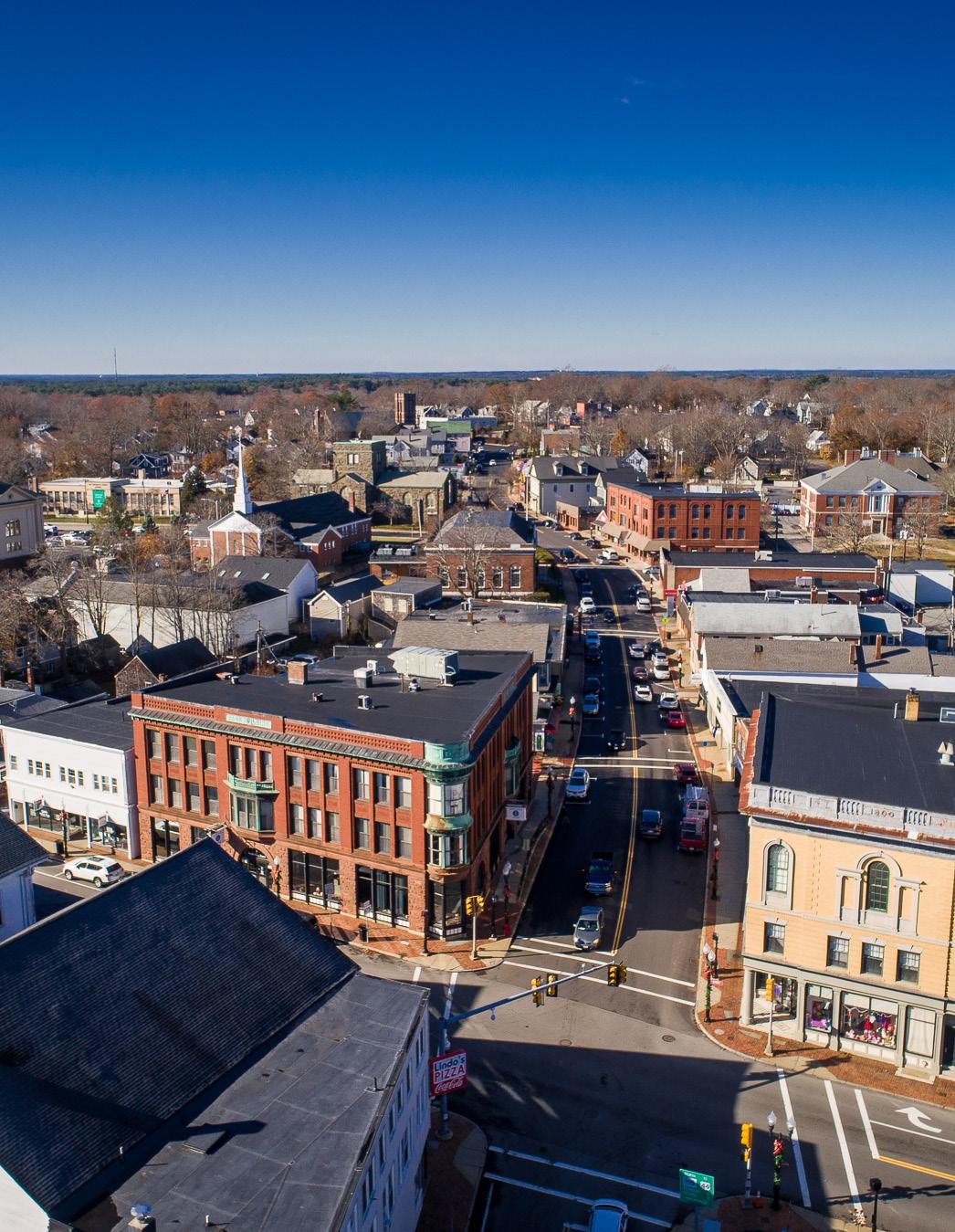
This CEDS responds to updated U.S. EDA requirements for performance measures. We intend measure our effectiveness using data points and milestones that can “be evaluated in an objective, timely, and cost-effective fashion.”36 We also chose performance measures that:
• Support our regional goals and ideal economic vision.
• Are clearly defined and focused on attainable, satisfactory outcomes.
• Have clearly identified responsible parties.
• Are – to the greatest extent possible – within the region’s ability to control (and not influenced by national or global trends).
36 U.S. EDA, Comprehensive Economic Development Strategy Content Guidelines: Recommendations for Creating an Impactful CEDS, 2016, page 15.
For the 2023 CEDS, SRPEDD intends to track the following “Top 10” performance measures:
• Continue to grow target industry clusters (as measured by location quotients greater than 1 relative to Massachusetts), especially in Health Care, Manufacturing, and Fishing/Agriculture, and Ocean-based NAICS industries.
• Maintain a current EDD-specific web page with an active, accurate inventory of sites (including a significant “development-ready” inventory) greater than or equal to 1,000 acres.
• Expand RESC activity and membership. Hold at least 4 RESC meetings per year (two virtual meetings and two meetings with in-person networking). Work with membership to identify and track the RESC’s own performance measures for success.
• Significantly advance/complete at least one prominent Workforce Development project in partnership with the region’s institutions to address a known or discovered skills gap.
• Revisit and reinvigorate the region’s coordinated Ocean-Based Industry/Marine Science and Technology (MST) Coalition under U.S. EDA’s leadership.
• Work in partnership with U.S. EDA, the Commonwealth of Massachusetts, and service area communities to significantly advance/ complete least one project that directly supports ocean based industries in Brayton Point, New Bedford Harbor, or another prominent deep water ports.
• Work in partnership with U.S. EDA, the Commonwealth of Massachusetts, and service area communities to significantly advance/ complete sewer infrastructure along at least one key corridor, such as Route 6 in Somerset/ Swansea.
• Work in partnership with U.S. EDA, other federal agencies, the Commonwealth of Massachusetts, and service area communities to significantly advance/complete at least three “softer” community development projects, such as place-making, arts and culture, and mixed-use project in one of the region’s transit-oriented development (TOD) areas, downtowns, or village centers.
• Work in partnership with U.S. EDA, other federal agencies, the Commonwealth of Massachusetts, and service area communities significantly advance remediation and redevelopment of at least one brownfield site in the region.
• Continue to narrow the unemployment and education gap (as measured by continued progress relative to the state of MA and other competitors).
Our region’s economic growth will depend on more than the proactive economic development planning outlined above. Our continued prosperity will also rely on our ability to prevent, withstand, and recover from disruptions to our economic system. And – while we acknowledge that these disruptions often originate from larger market changes, regional industry downturns, or external shocks – our region seeks to build lasting “economic resilience” by anticipating risks, evaluating their potential impact on economic assets, and building responsive capacity. In short, this CEDS recognizes that fostering our regional economic resilience entails both establishing sustainable, long-term strategies to withstand disruptions and adopting responsive projects and initiatives that build new capacity among our regional stakeholders that help us avoid disruptions.
Our district is extremely fortunate to have a U.S. EDA- and Commonwealth of Massachusetts-funded Regional Resilience Plan project to complement this CEDS.37 Our SRPEDD Regional Resilience Plan (or SRRP) will be a comprehensive deep dive into the investments and initiatives needed to build capacity and prevent disruption. The project will improve our economic resilience by identifying and proposing solutions to vulnerabilities38 across three broad themes: (1) Economy, (2) Environment, and (3) Governance. Working within this same, threepart framework, the SRRP will also build upon our existing regional assets.39 This diverse approach will ensure that our communities can withstand future disruptions to the greatest extent possible.
37 The project is ongoing. We anticipate completion in 2024.
38 These are comparable to the CEDS’s “threats” and “weaknesses.”
39 These are comparable to the CEDS’s “strengths” and opportunities.”
Similarly, in an effort to bridge our region’s administrative boundaries, recognize commonalities between communities, and build the broadest possible set of skills and best practices, the SRRP will also customize dozens of strategies for similar types of locations – called “Typologies.” These typologies range from rural communities and seaside villages to bedroom communities and center cities.
While the project will be staffed by SRPEDD’s planners, it will be led by a Steering Committee that represents all types of places and ideas connected to resilience. Further, the Steering Committee will be informed by three Working Groups: (1) Economic, (2) Environmental, and (3) Infrastructure & Utilities. Each Working Group will include members of the SRPEDD Commission, representatives from regional organizations, such as the RESC, and community groups, and professionals with experience in the broad range of topics addressed in the SRRP.
The project’s diverse funding, and committed stakeholders will enable the project team to achieve four main outcomes:
• Create a hub for resilience data and analysis for our region that will support local users.
• Expand and improve regional networks through capacity building with external partners.
• Identify a current set of top-tier resilience projects to target for construction and implementation.40
• Update and establish an improved, resiliencebased internal work program for SRPEDD.
40 These will be similar to the CEDS’s “Priority Projects” and “Priority Partnerships” – and will likely include some overlapping investments and initiatives.
Through these channels, the SRRP will lead to meaningful, visible, and measurable improvements to the region’s resilience.
The Economy volume of the SRRP will examine the following five pillars of economic resilience:
Thriving and supported workforce that can meet its basic needs.
In order to perform at their peak, employees across industries must have their basic human needs for housing, healthcare, and food met in their daily lives. This section of the SRRP Economic volume explores the state of housing, healthcare, and access to food in the SRPEDD region, and the areas where we are vulnerable to being unable to serve a dynamic regional workforce with these necessities.
Protected and growing utilities network.
In order to operate and develop new businesses, there must be resilient and extended utilities in place. This section of the SRRP Economic volume explores the state of water, sewer, broadband, telecommunications, and other similar utilities in the SRPEDD region, where and how these utilities are most vulnerable to failure during a disaster, and where the limits of our current utility networks may act as a barrier stifling economic growth.
Resilient and multimodal transportation network.
In order to connect markets with customers and to connect employees with existing and future employers, we must be able to reliably move goods
and people around our region through a robust, multimodal, and disaster-prepared transportation network. This section of the SRRP Economic volume explores the state of the region’s roadways, public transit networks, and other transportation-related services, such as freight movement, to pinpoint known areas of vulnerability to flood and other natural disasters and to start to correct for these vulnerabilities.
An expanded economic development resource network that includes partners beyond the traditional Economic Development Offices, local Chambers, state and local government, and the educational community is required during service interruptions and emergency events. This section of the SRRP Economic volume explores current communications networks among economically oriented entities and seeks to expand this network into other essential related sectors, such as emergency operations, healthcare, childcare providers, transportation service providers, housing provides, and other community service agencies.
Diversity is a contributing factor to resilience in many systems. Should one economic sector come under stress due to external pressures or market changes, a region that puts all its economic eggs in one basket may suffer an extensive blow. This section of the SRRP Economic volume will explore programs and policies that support innovative entrepreneurship and workforce development, underpinning the creation of future industries that can help to enable economic diversity within the SRPEDD region.
The district is growing. However, Bristol County is growing at a lower rate than Plymouth County and the Commonweatlh as a whole.
The district is becoming increasingly diverse - especially our cities. Across the board, the share of white populations are decreasing in the region, while the share of non-white populations continue to rise.
Bristol County
Plymouth County
The district and the Commonwealth are achieving higher levels of eduction over time.
Generally, Median Houshold Incomes in the region are rising. Though Plymouth County is more affluent, Bristol County more income growth in recent years.
Individuals in the region communite between 25-33 minutes a day to get to work. Commuting times in the region increased over the last five years. In the wake of the pandemic, the region will re-evaluate the trends in this particular characteristic.
Building permits for single-family homes remained steady from 2016 to 2020.
New home sales have been on the rise in the region since 2010, the country’s last recession. Data shows a slight uptick since 2019, which cooincides with the beginning of the pandemic’s heated housing market.
Bristol and Plymouth Counties have compartively more affordable Medial Sales Prices for Single-Family homes - a competitive advantage for households as they make decisions about where to live and work.
Census Building Survey
As the largest fishing port in the region and greatest producer at the national level, the New Bedford Port continues to dominate the fishing industry in the region. In the last decade, production(?) of fish decreased by 13% but the value of the port’s product increased by over 20 percent.
Over the last several years, the number of farms and croplands in the region decreased. Though Bristol County experienced loss of farmland acreage, Plymouth county saw gains upwards of 20 percent. Importantly, despite losses of overall farms, the value of the product continues to grow from year to year.
Source: USDA

June 6, 2023
Jeffery Walker, Executive Director
UNITED STATES DEPARTMENT OF COMMERCE
Economic Development Administration
PHILADELPHIA REGIONAL OFFICE
Robert Nix Federal Building, 900 Market St . Suite 01
Philadelphia, PA 19107
Southeast Regional Planning & Economic Development District
88 Broadway
Taunton MA 02780
Dear Jeff,
Thank you for the recent submission of your CEDS document. EDA appreciated the opportunity to review your CEDS document for the period of May 2023 through May 2028.
We are pleased to inform you that EDA’s review of your CEDS document and process align with the regulatory and programmatic requirements and your CEDS has been accepted by EDA. The priorities and focuses outlined within your CEDS document will help form the foundation of how EDA reviews applications for Public Works and Economic Adjustment Assistance Programs from your region.
We greatly appreciate the work of the Southeast Regional Planning and Economic Development District Board and CEDS Committee to develop this innovative, regionally driven economic development strategy. EDA looks forward to continuing to work with you to help support the goals and priorities outlined in your recently submitted CEDS.
Sincerely,
Debra Beavin, Economic Development Representative Philadelphia EDA Region